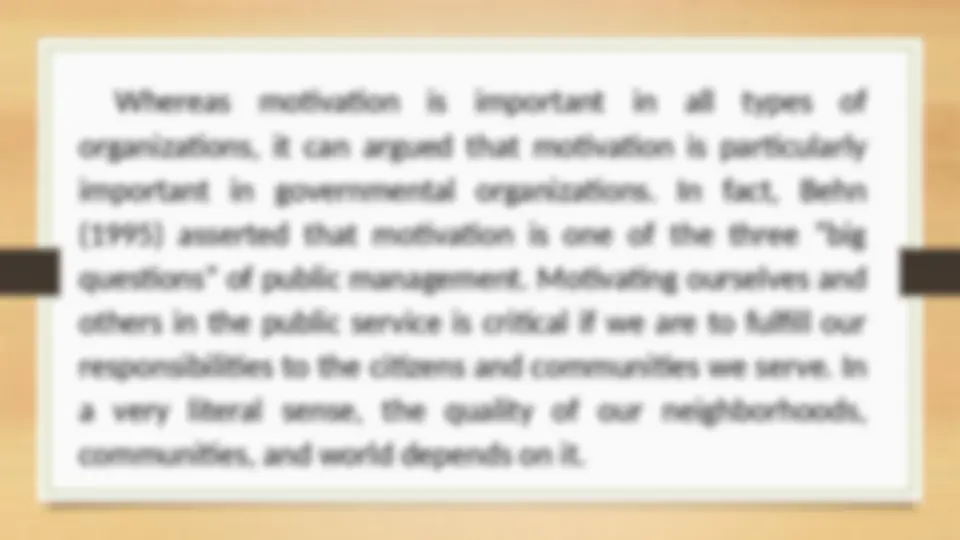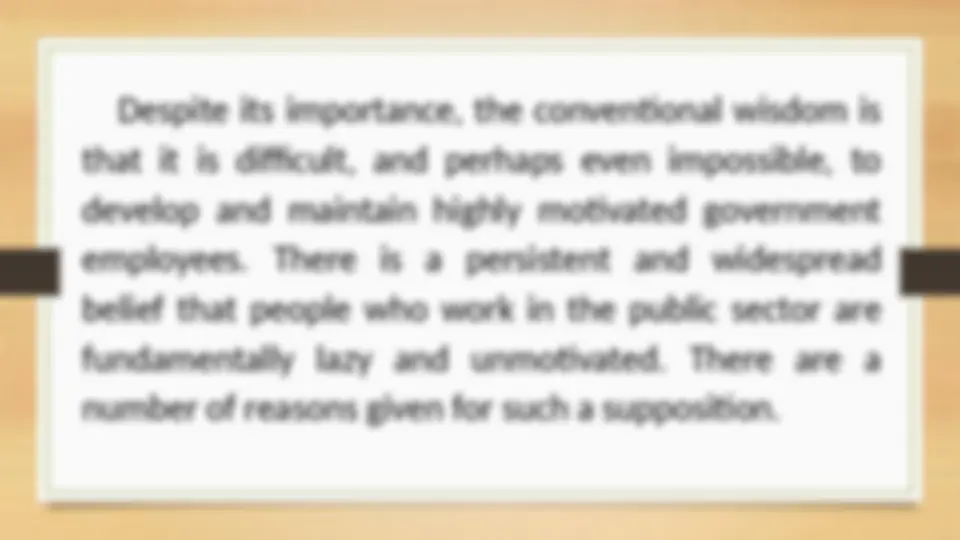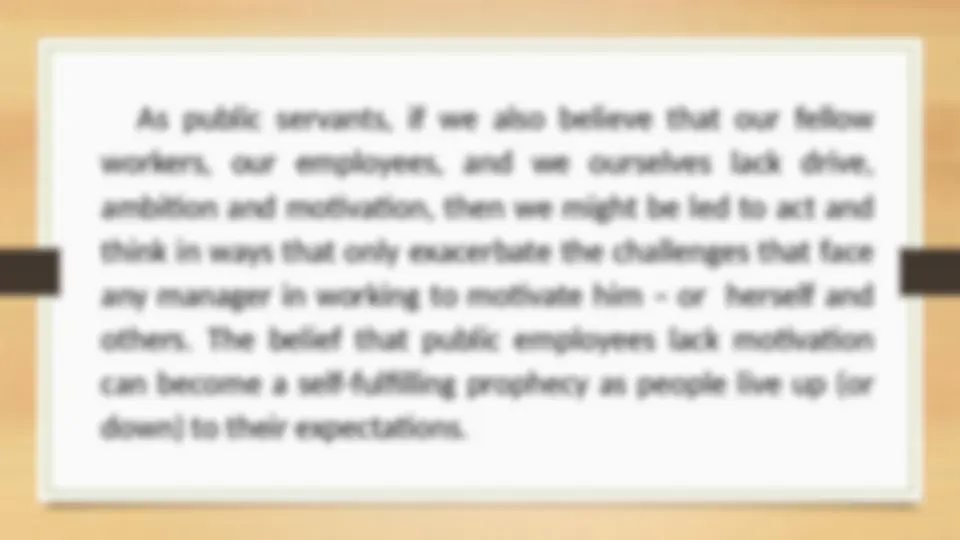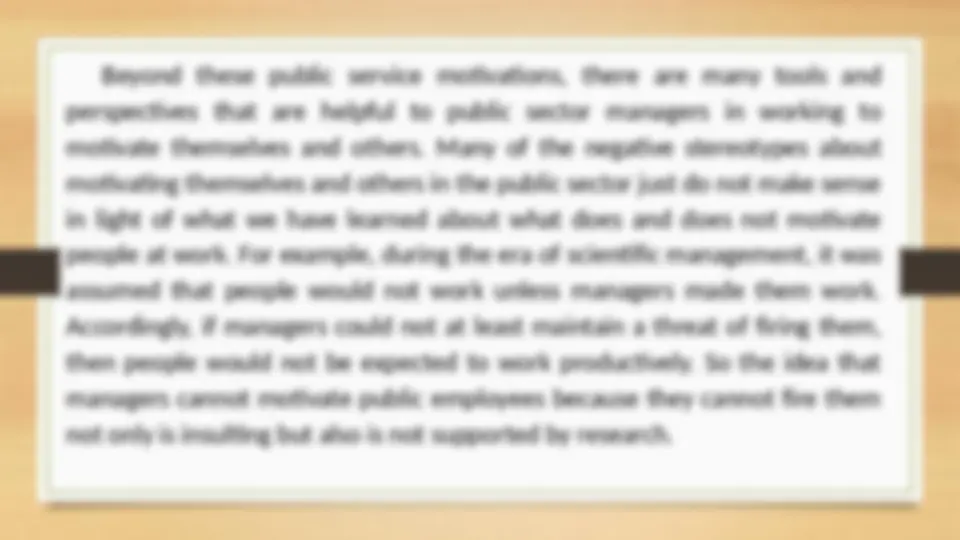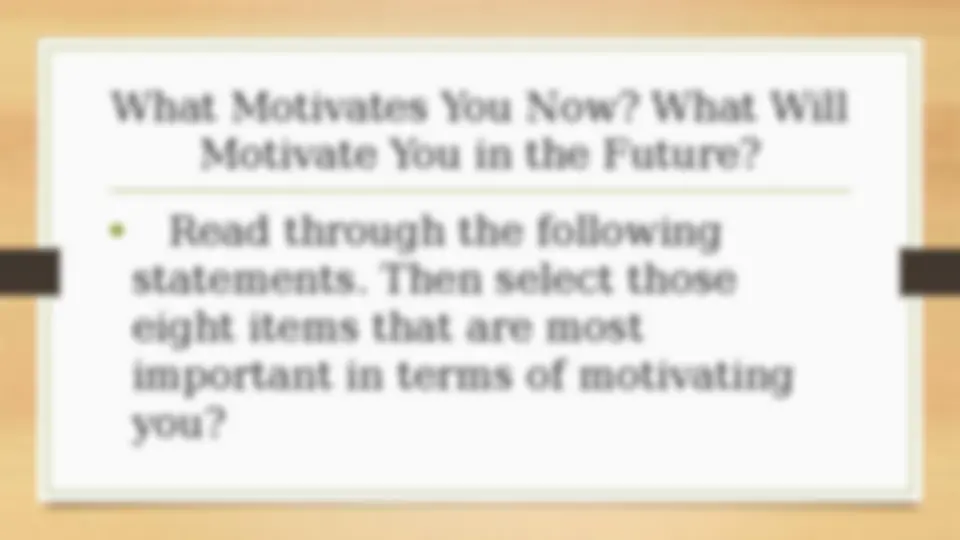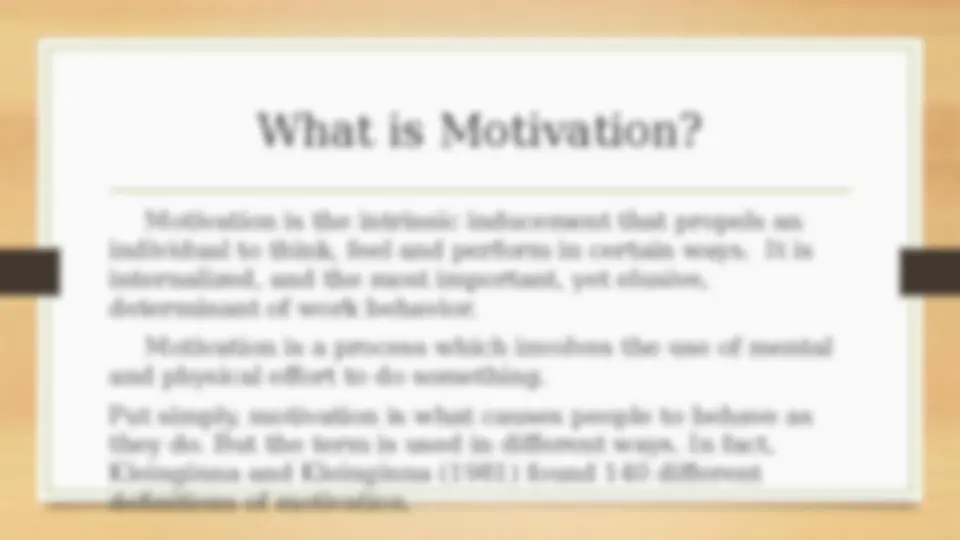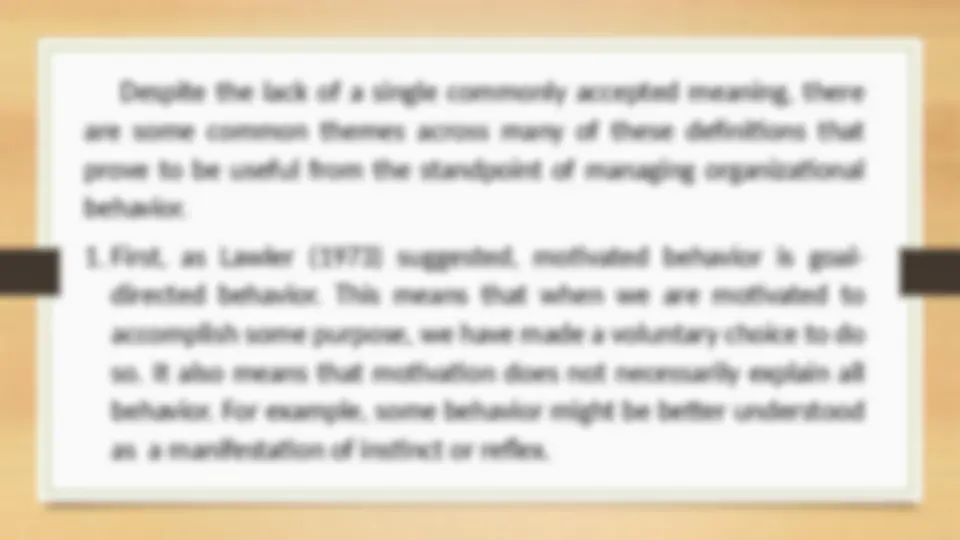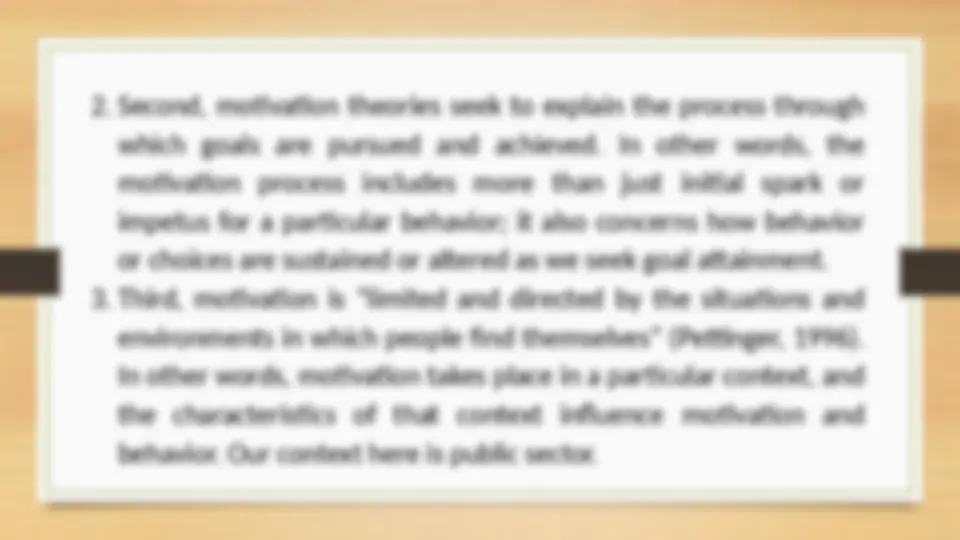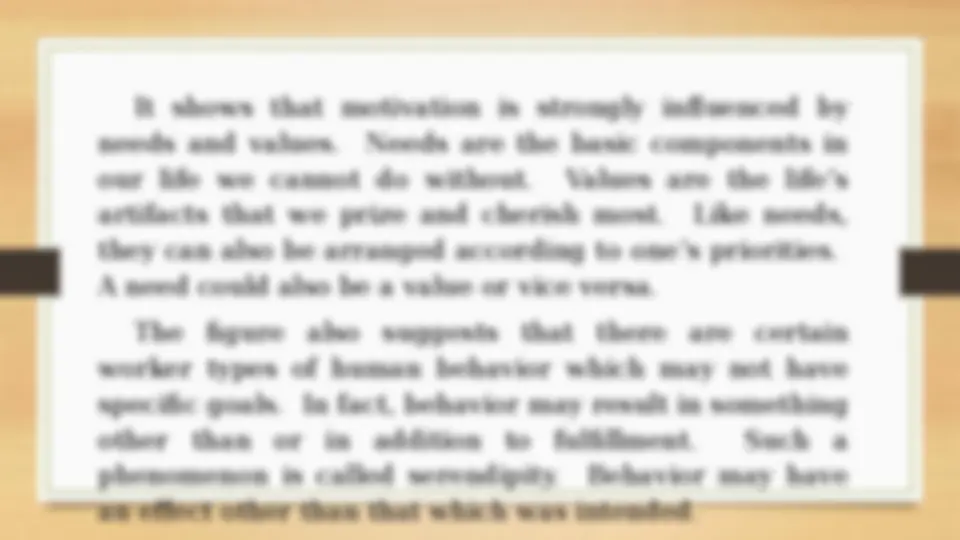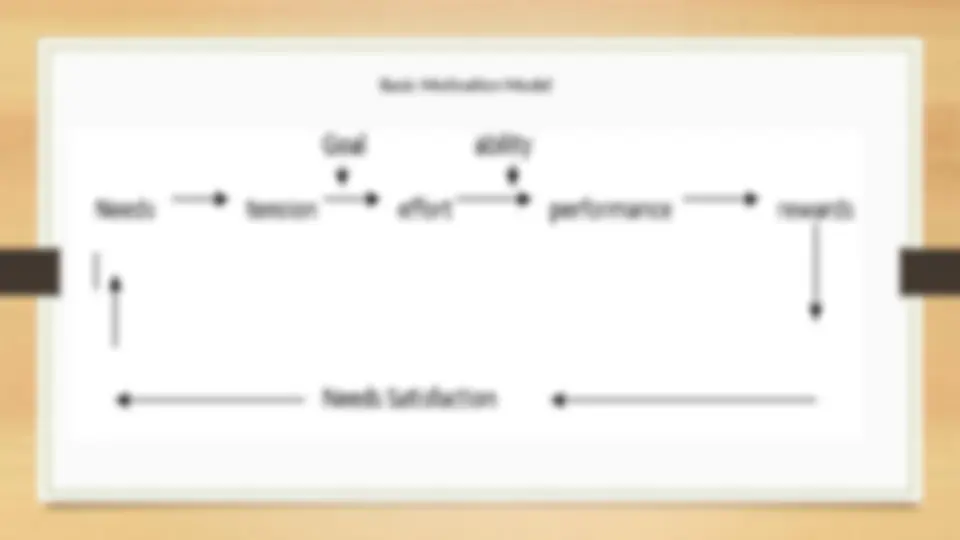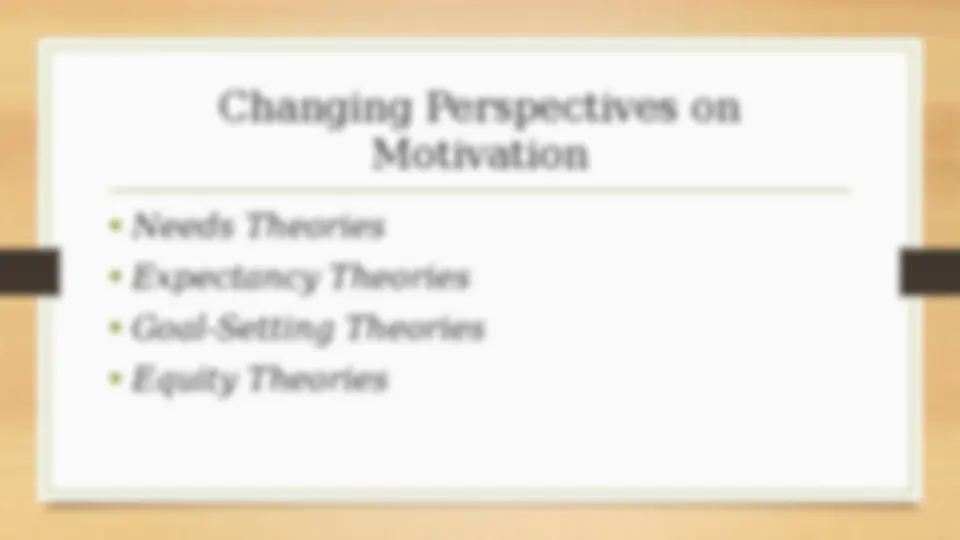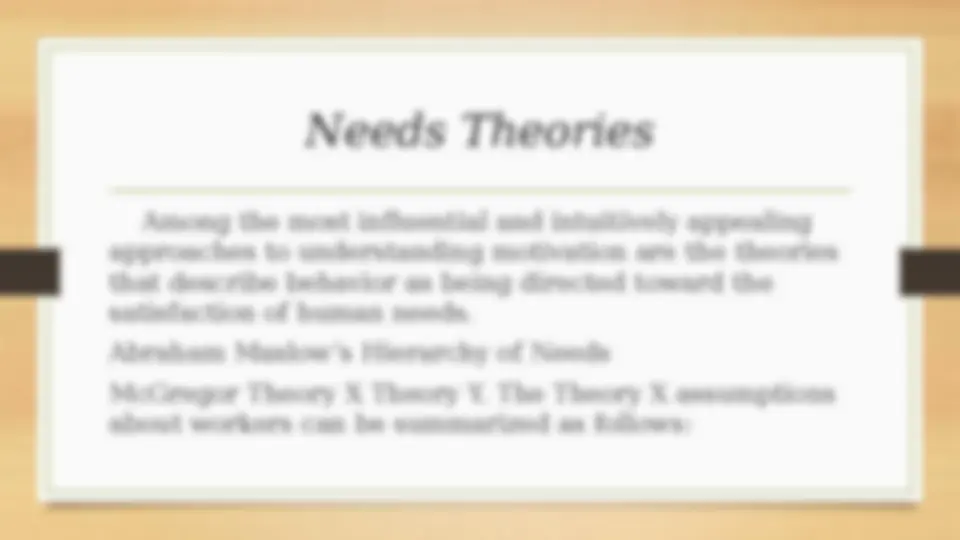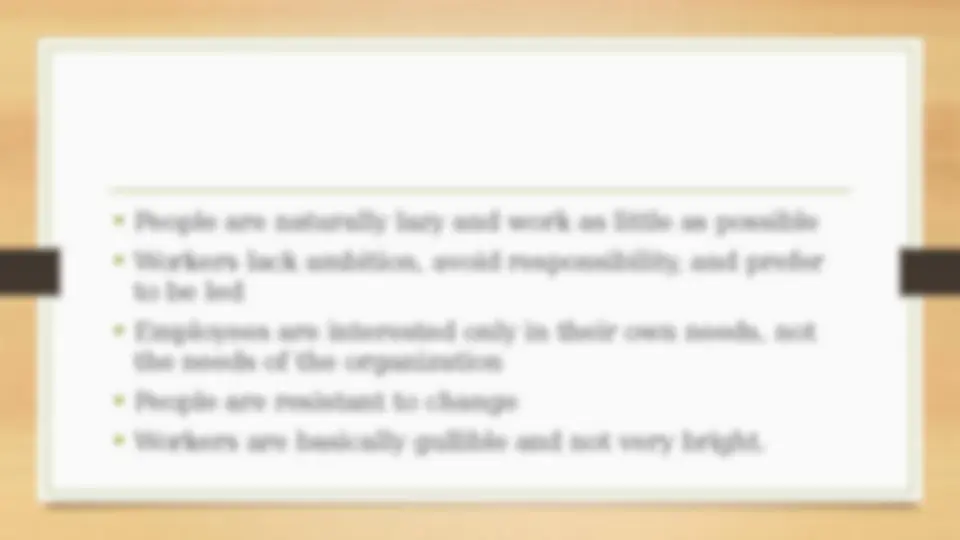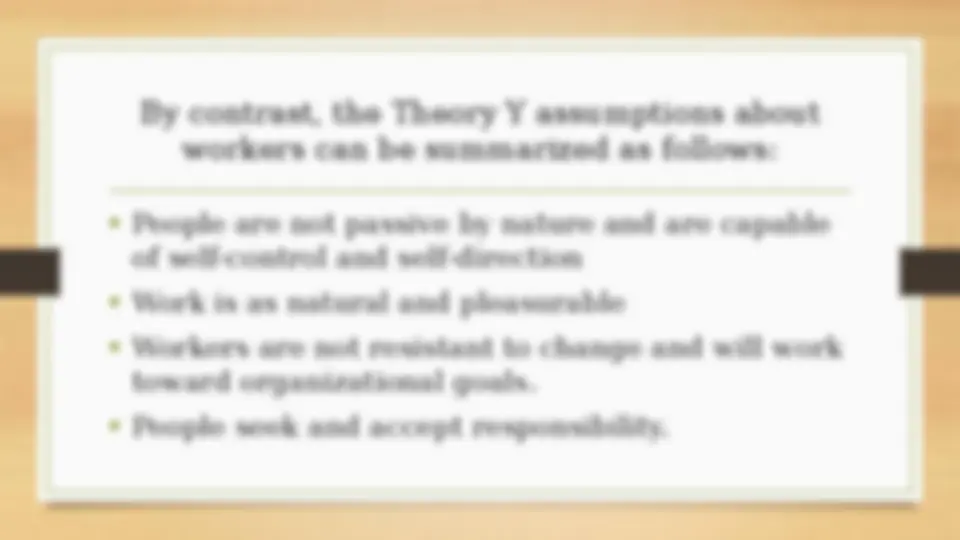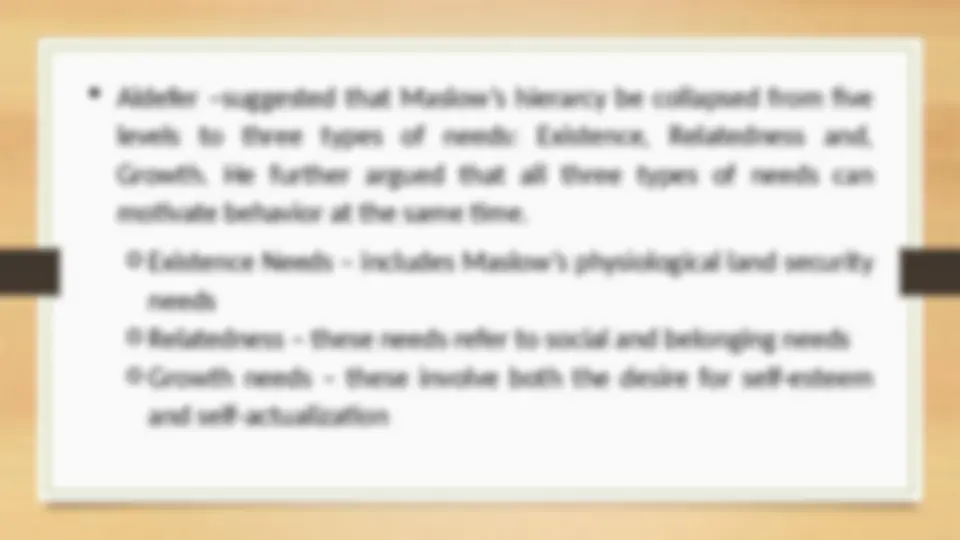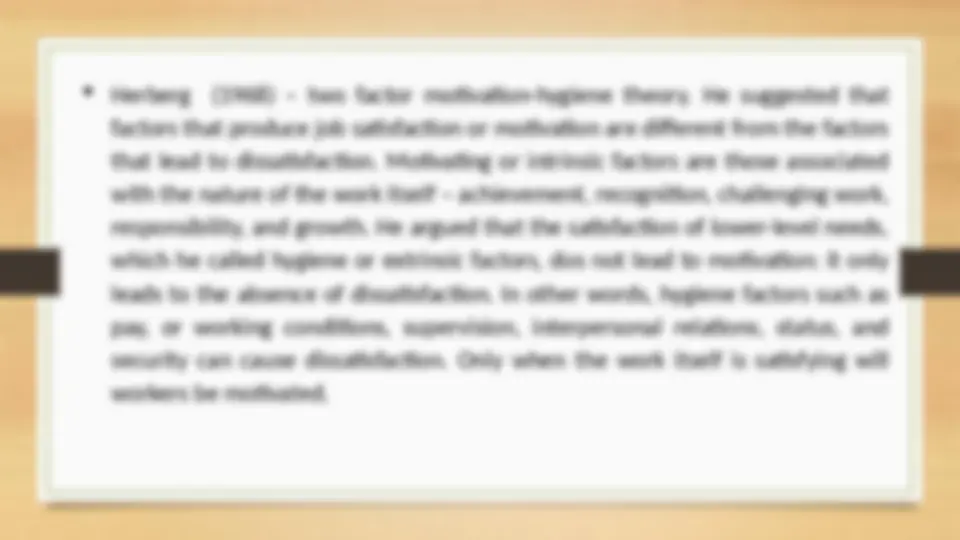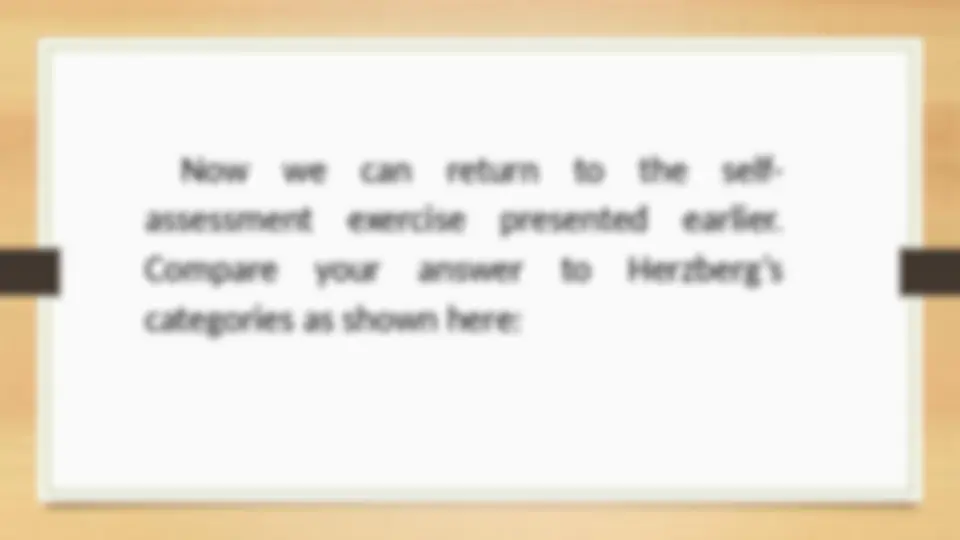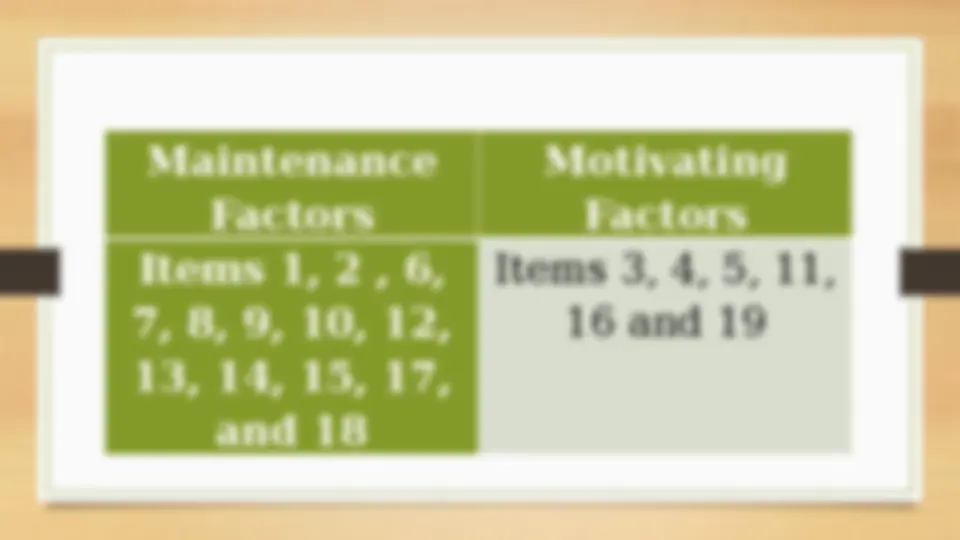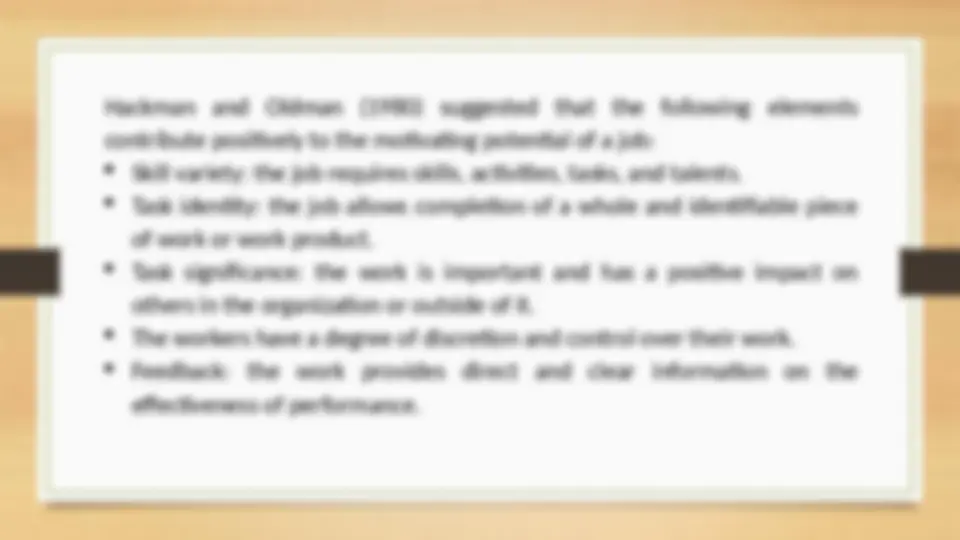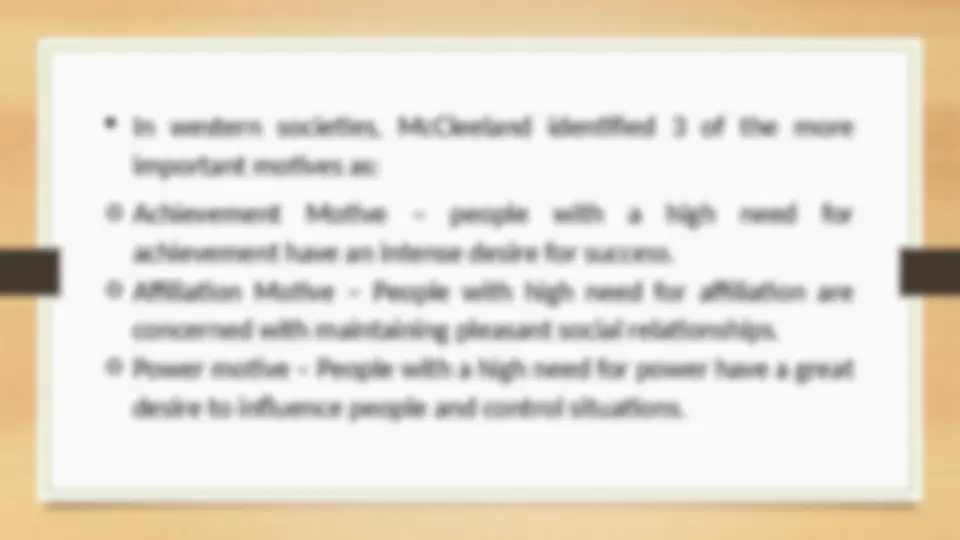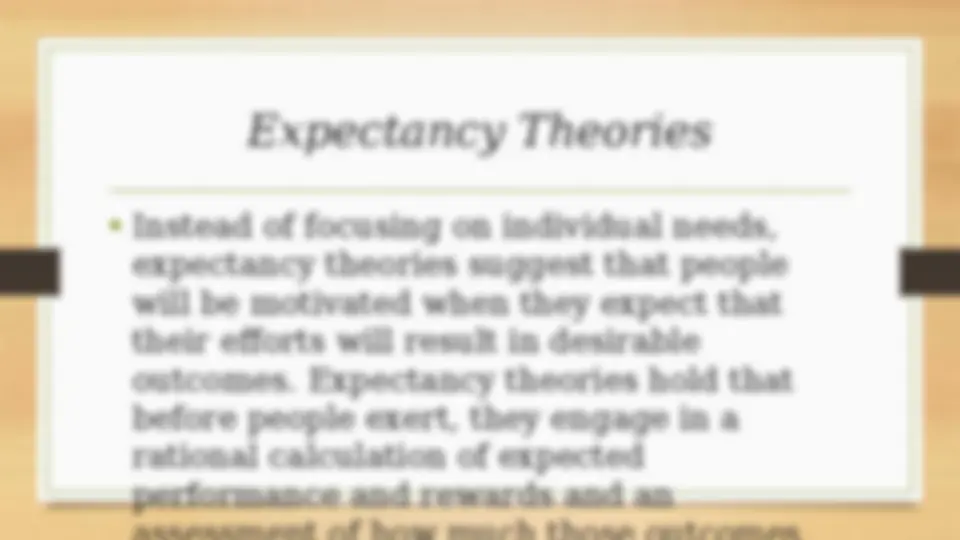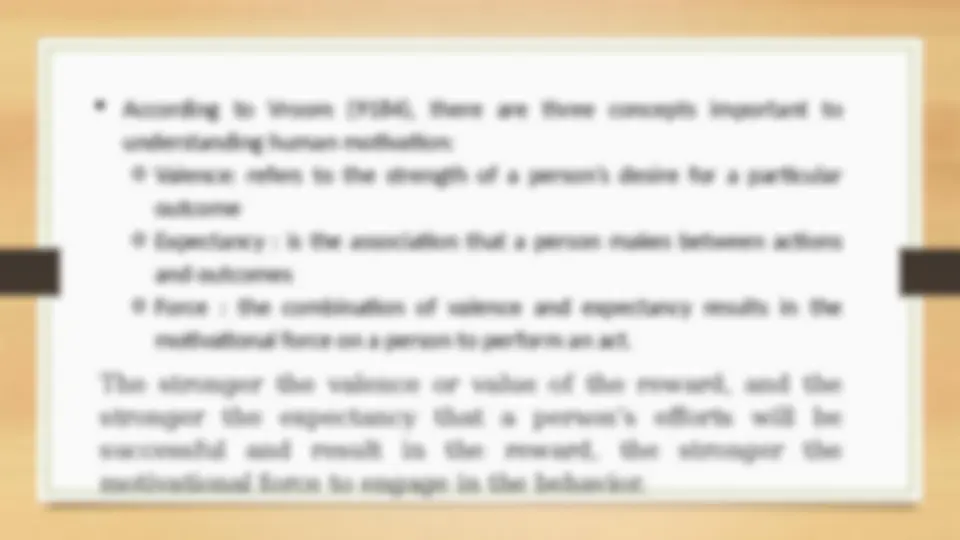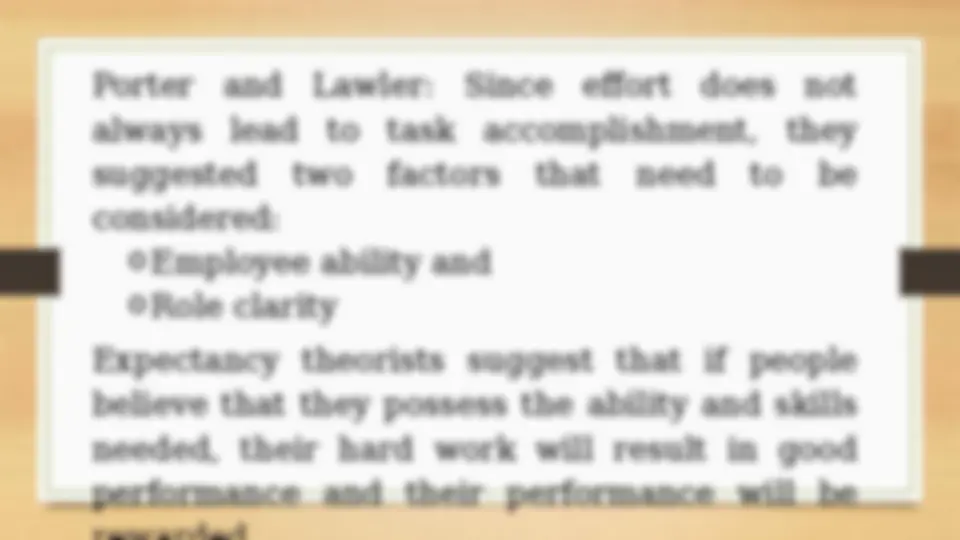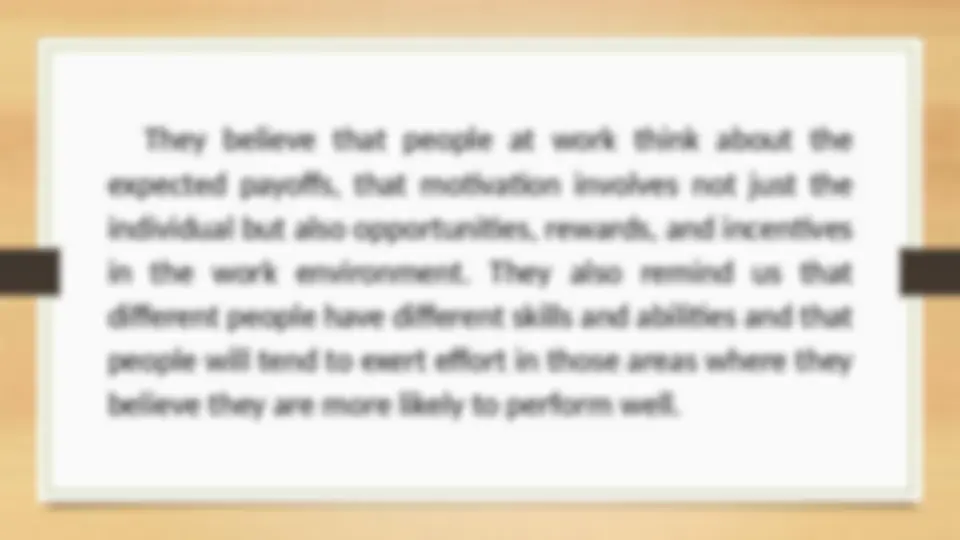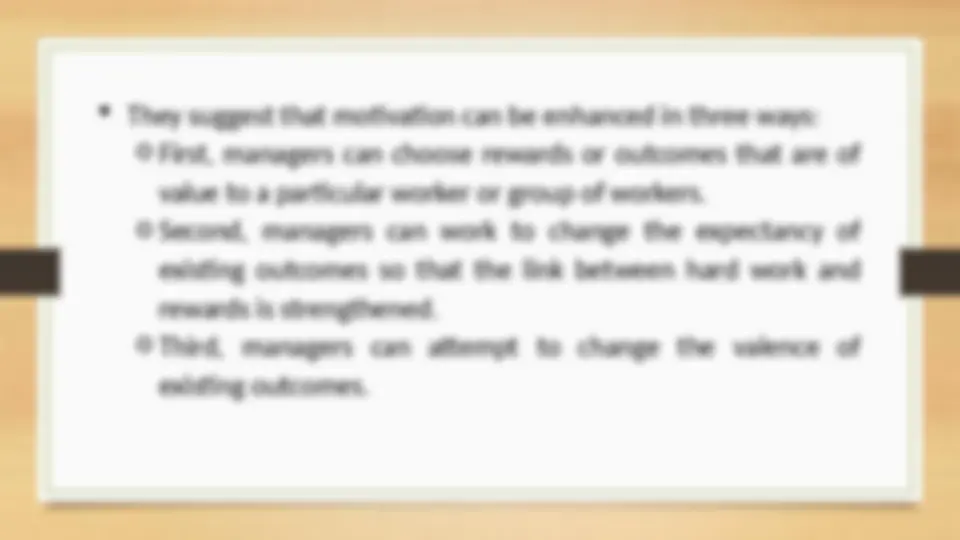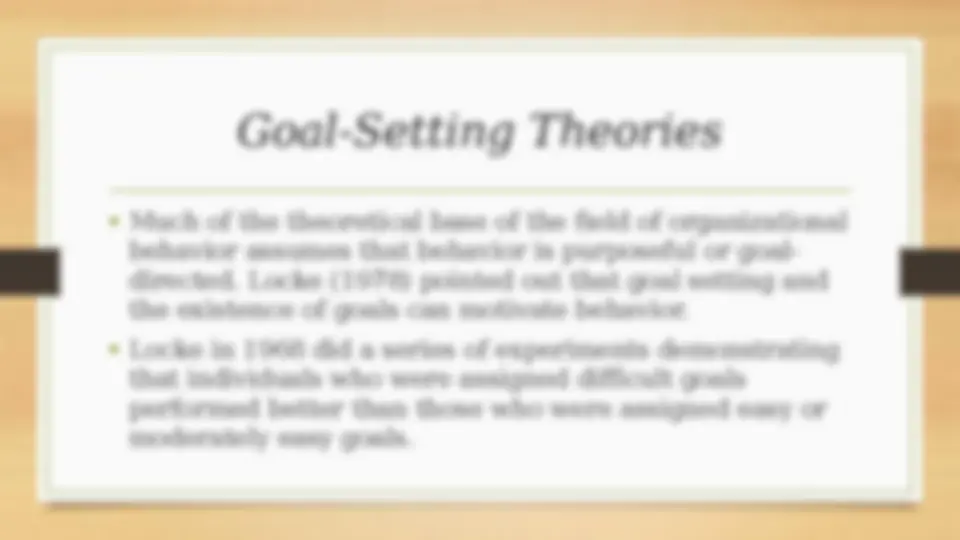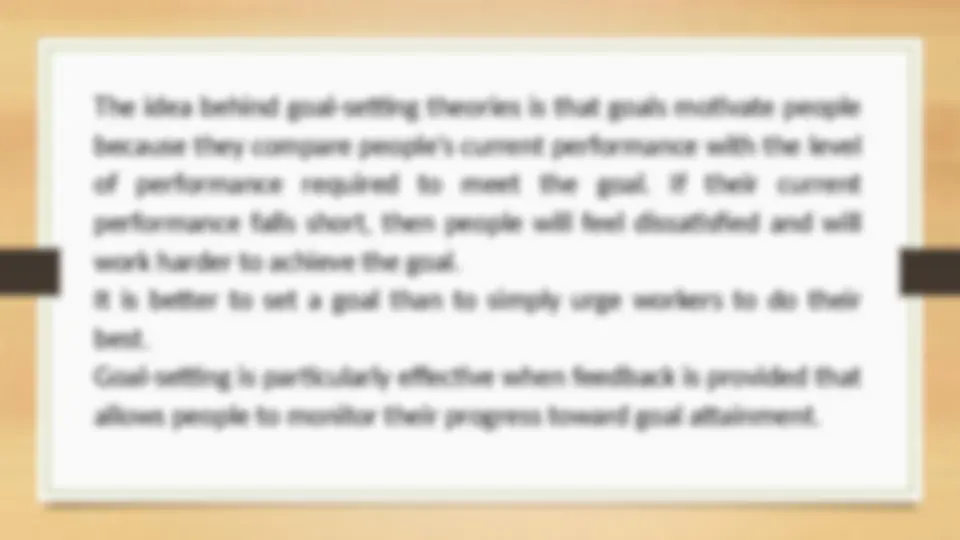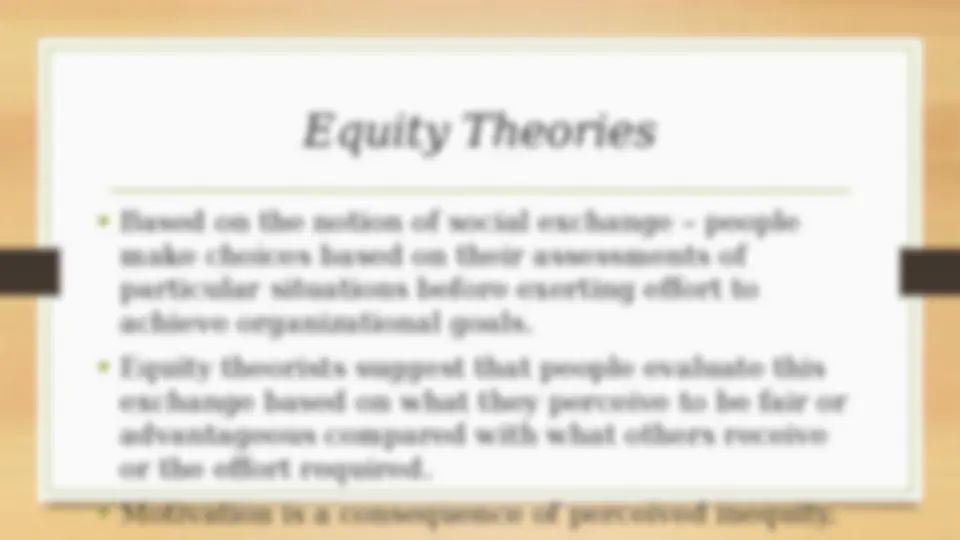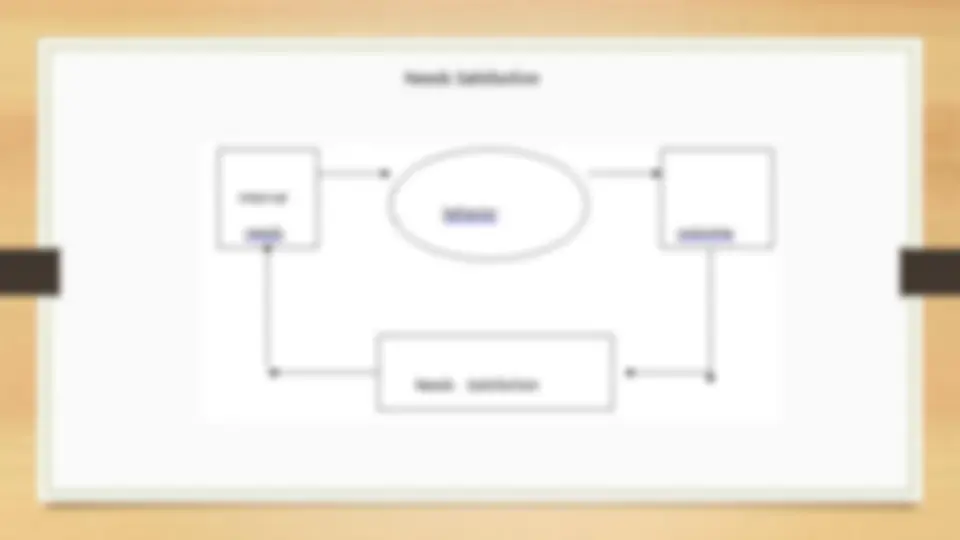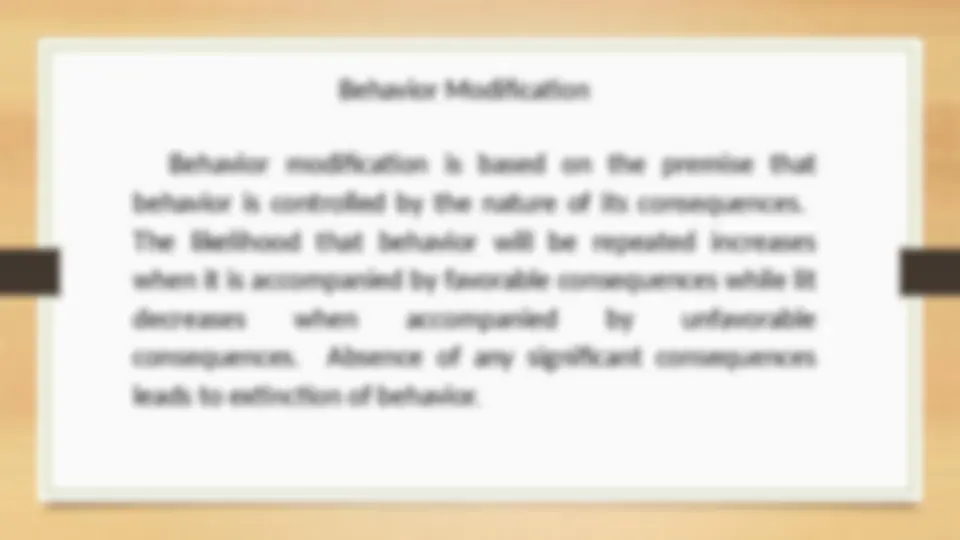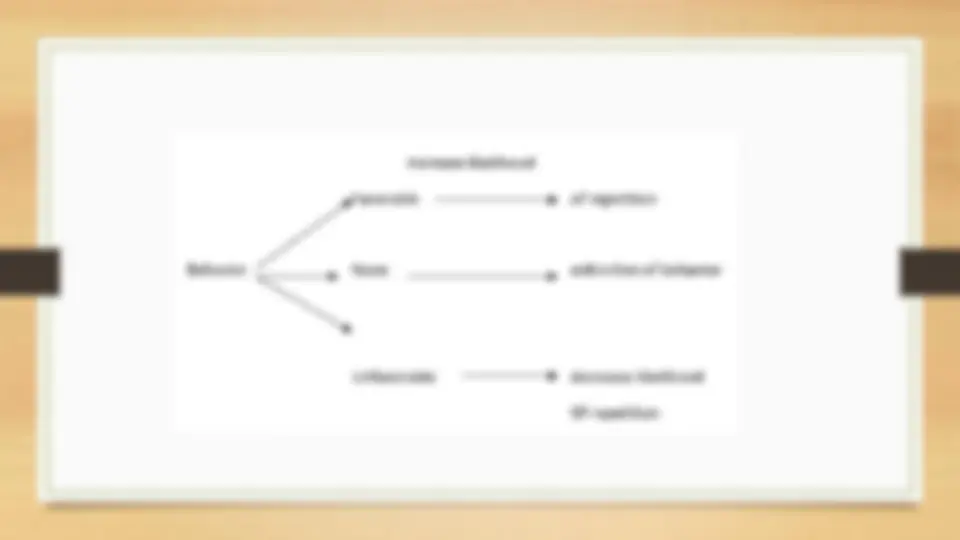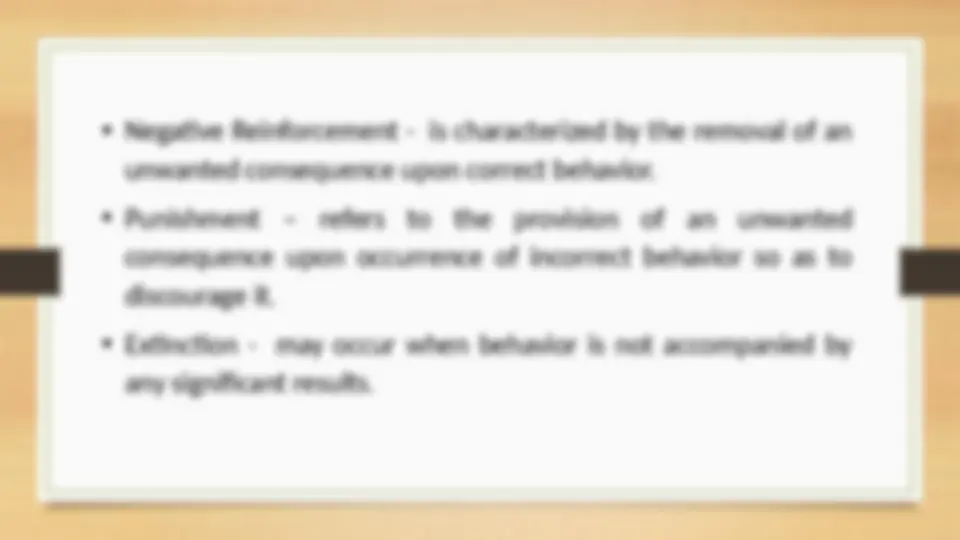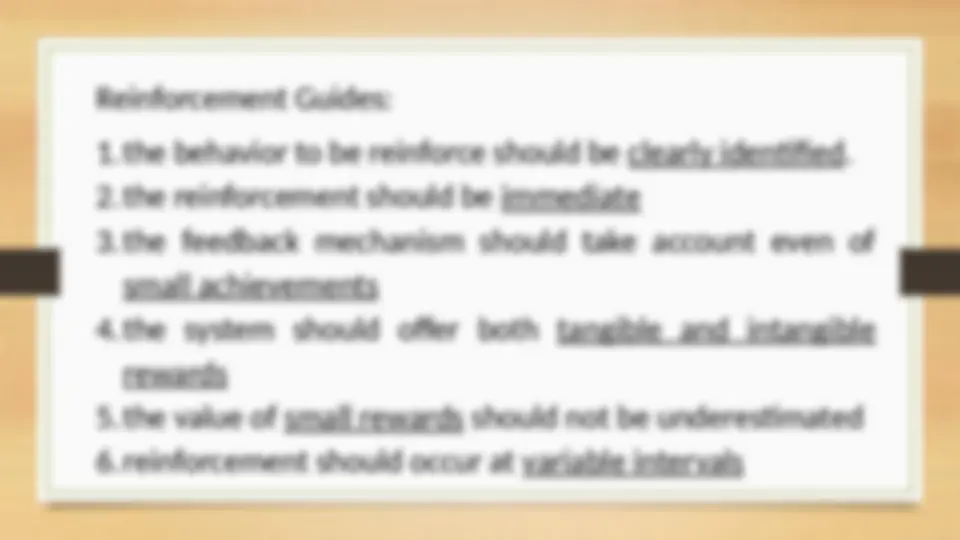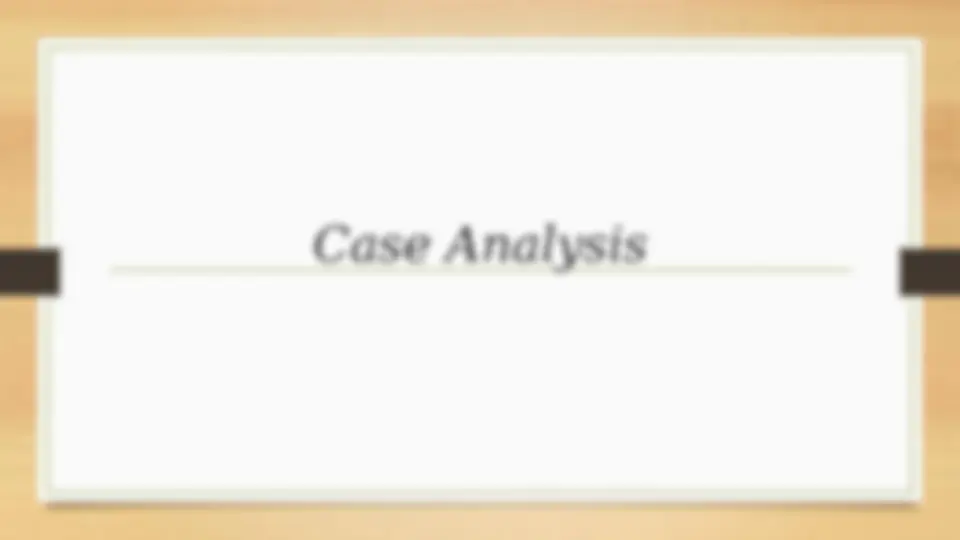Download Motivation in human behavior in organization and more Lecture notes Communication in PDF only on Docsity!
HBO
Chapter II
Prepared by: JOAN A. TOMAS, DPA
Part II
NATURE, THEORIES, AND
APPLICATION OF MOTIVATION, NEEDS
AND VALUES
- All organizations need motivated employees. People who are motivated to consistently, creatively, and energetically work toward the attainment of organizational goals are the key to organizational success. Motivation also is crucial to our own personal success. The more motivated we feel to do our best, to accept new challenges, and to help others accomplish their goals, the more satisfied and successful we will be in our work.
Despite its importance, the conventional wisdom is that it is difficult, and perhaps even impossible, to develop and maintain highly motivated government employees. There is a persistent and widespread belief that people who work in the public sector are fundamentally lazy and unmotivated. There are a number of reasons given for such a supposition.
(^) First, the rewards and incentives available for use by public sector managers, particularly in terms of pay and promotion, might be limited. Behn characterized public managers as frequently complaining about “their inability to motivate their subordinates” and to “get anything done” because of civil service rules that they believe prevent them from firing and rewarding anyone. (^) Second, many believe that people who pursue public sector careers are less achievement oriented and are primarily attracted to public service by job security. The assumption is that, public employees are, by their very nature, not a very highly motivated group. (^) Third, motivation is said to be more complex in public organizations because the goals often are more ambiguous than those in the private sector, where the clear and fundamental goal is profit.
Furthermore, Guyot (1960) reported that public managers had a
significantly higher level of achievement motivation than did their
business sector counterparts. Despite these research findings, the
perception that public servant lack motivation is persistent. This
believe might be troubling in and of itself. Kilpatrick, Cummings and
Jennings (1964), interviewed students and government and
nongovernment employees about their views on motivation in the
public and private sectors. The majority of those questioned reported
that they thought that government employees lacked drive and
initiative.
As public servants, if we also believe that our fellow
workers, our employees, and we ourselves lack drive,
ambition and motivation, then we might be led to act and
think in ways that only exacerbate the challenges that face
any manager in working to motivate him – or herself and
others. The belief that public employees lack motivation
can become a self-fulfilling prophecy as people live up (or
down) to their expectations.
What Motivates You Now? What Will Motivate You in the Future?
- Read through the following statements. Then select those eight items that are most important in terms of motivating you?
- A positive working environment
- Good pay
- Lots of freedom on the job
- Praise for a job well done
- Interesting and challenging work
- people with whom I enjoy working
- Knowing that there will be consequences for poor performance
- A clearly written job description’
- Chance for promotion 10.A nice office
- Personal respect 12.A generous retirement program 13.Performance evaluations 14.Doing important work 15.Time off from work 16.Serving the public and making the community a better place to live 17.Regular hours 18.Knowing “inside” information about what is going on at work 19.Opportunity for learning and growth
What is Motivation? Motivation is the intrinsic inducement that propels an individual to think, feel and perform in certain ways. It is internalized, and the most important, yet elusive, determinant of work behavior. Motivation is a process which involves the use of mental and physical effort to do something. Put simply, motivation is what causes people to behave as they do. But the term is used in different ways. In fact, Kleinginna and Kleinginna (1981) found 140 different definitions of motivation.
Despite the lack of a single commonly accepted meaning, there
are some common themes across many of these definitions that
prove to be useful from the standpoint of managing organizational
behavior.
1. First, as Lawler (1973) suggested, motivated behavior is goal-
directed behavior. This means that when we are motivated to
accomplish some purpose, we have made a voluntary choice to do
so. It also means that motivation does not necessarily explain all
behavior. For example, some behavior might be better understood
as a manifestation of instinct or reflex.
Motivation-Behavior Model
BEHAVIOR (^) GOAL/EFFECT NEEDS/VALUES MOTIVATION
The nature of motivation:
a. Motivation energizes and gives it direction. A motivated
person will work harder and persevere longer than an
unmotivated person.
b. Motivation is the strength of the drive toward an action.
c. Motivation is said to be ad hoc (short time) or fleeting.
What motivates a person now ceases to motivate him later since
needs, values and environment change.
Basic Motivation Model
Changing Perspectives on Motivation
- Needs Theories
- Expectancy Theories
- Goal-Setting Theories
- Equity Theories

